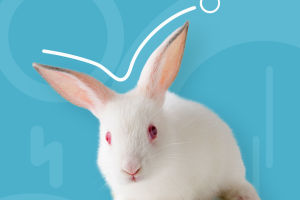From the delicate Eurasian wren to the plump Adelie penguins, the bird world is impressively cute! Of course, each bird exhibits its own unique beauty, and making these lists is even more fun. Keep reading this article and you'll not only be hooked but expand your knowledge of birds along the way.
1. Eurasian Wren
Eurasian wrens are easily identified by their stubby tail, which is often held upright. At the top of our list of adorable birds is the Eurasian Wren, a charismatic "brown bird" that fits in a teacup.
Eurasian wrens are found throughout Europe and North America and parts of Asia. Their cuteness is in large part due to their slender and stylish build, which is further accentuated when they fluff their feathers.
The Eurasian Wren is light brown in color with delicate dark brown stripes on the wings, tail and body. They weigh only one-quarter to one-half ounce, and adults are only 7 to 12 centimeters long from beak to tail.
2. Atlantic Puffin
Atlantic puffins are adorable for their unique, bold colors and proud stature.
Atlantic puffins are fascinating seabirds that nest in large gregarious colonies along the rocky coastline of the North Atlantic Ocean.
Outside of the breeding season, Atlantic puffins spend time at sea, hunting in the open water. Atlantic puffins are endearing for their small, round body and unique coloration.
It has black feathers on its back, wings and tail, and bright white feathers on its belly and face.
Its signature feature is its large, triangular beak, bright orange-yellow, with a blue base and grooved base.ase.
3. Black hat tits
Black-capped tits are cute, but tough, and bravely come forward in North America's coldest spring.
Black-capped tits are often frequent visitors to North American backyard breeders. They are hardy birds that remain resident throughout their range even in the coldest of spring.
To cope with the extreme cold they usually have to endure, black-capped tits lower their body temperature at night, entering regular hypothermia and saving a lot of energy in the process.
As the name suggests, black tits have black caps, bibs, and white cheeks. Their body plumage is more subtle in color, with grey-green backs, pale yellow flanks, and dark grey wings and tails.
4. Northern Sawtooth Owl
The Northern Sawtooth Owl has a distinct white Y-shaped patch on the facial disc.
No list of cute birds would be complete without an owl, and the northern sawtooth owl is arguably the cutest of all owl species. The Northern Sawtooth Owl is a small owl with a round face and large golden eyes.
Like many owls, the northern saw owl is a mysterious nocturnal bird that preys on small mammals such as deer mice and white-footed mice. The northern saw owl's range extends from coast to coast in North America.
They breed in boreal and northern hardwood forests in Alaska, British Columbia, the Pacific Northwest, and the Rocky Mountain states.
5. Adélie Penguins
Adélie penguins are named after Adélie de Urville, wife of foreign Antarctic explorer Dumont de Urville.
At the southernmost latitudes in the world, the Adélie penguin can be found, a black-capped tit-loving species that combines cuteness with toughness. Adélie penguins inhabit the circumpolar region of the Antarctic coastline.
Adélie penguins are typical penguins with black feathers on the back, head and top of the wings and white feathers on the belly and bottom of the wings.
6. Costa's Hummingbird
There is something missing from any list of cute birds if hummingbirds are not included. Here we include the Costa Hummingbird, a small hummingbird that lives abroad in the southwestern and Mexican deserts. Costa's hummingbirds are almost as light as postage stamps, with an average mass of just over 2.8 grams. They feed on the nectar of flowers such as desert honeysuckle and cacti.
7. Sandpiper
Sandpiper is a widespread species of sandpiper that inhabits the arctic and subarctic polar regions.
Dunlins breed along the coastlines of Alaska and northern Canada and overwinter on more southern coasts around the world. The species is very diverse, with about 10 recognized subspecies.
Dunlins feed on clams, worms, and other invertebrates. During the breeding season, they have a distinct black patch on the belly, but outside the breeding season, they have a white belly.


